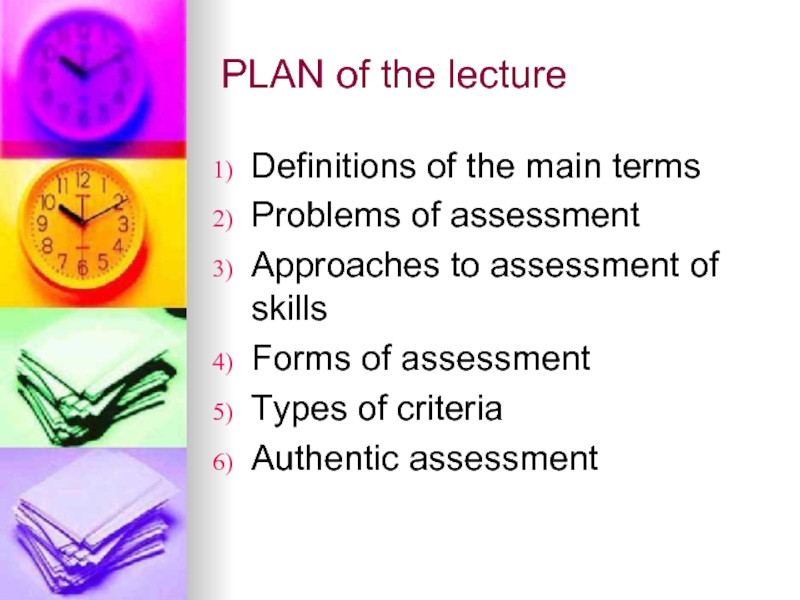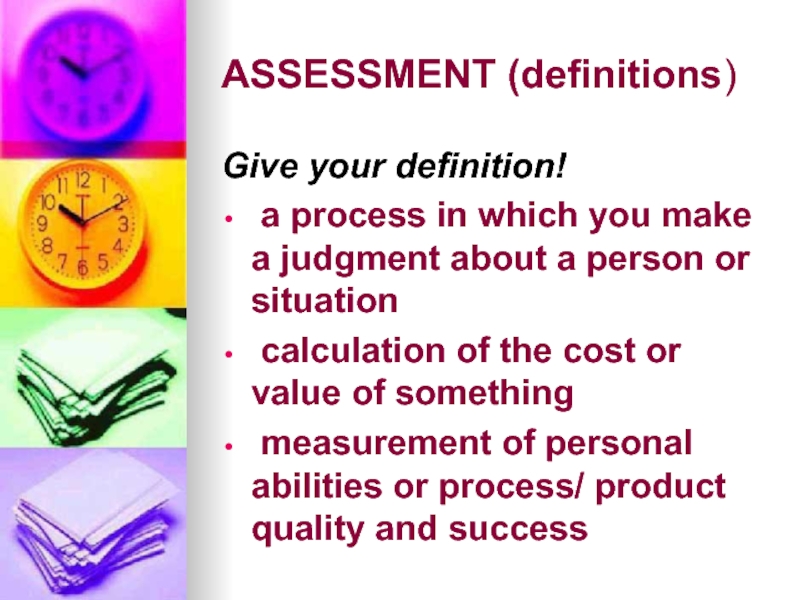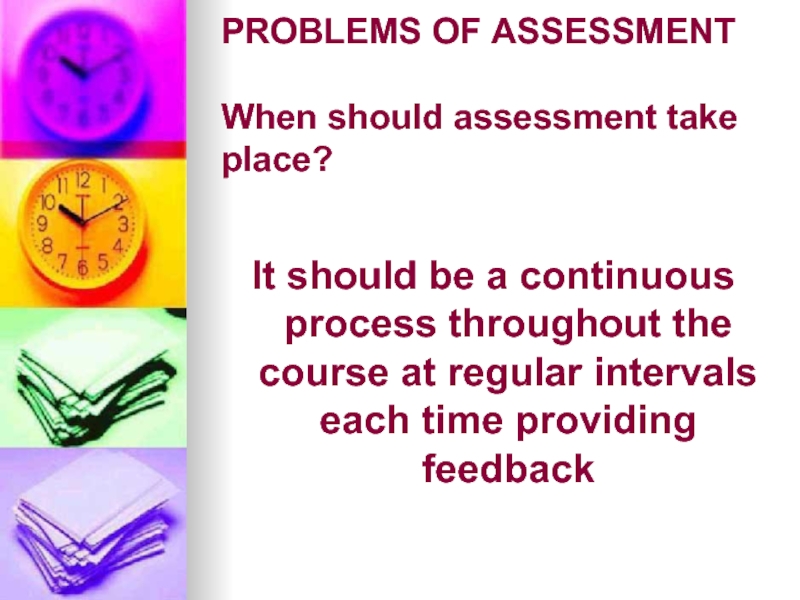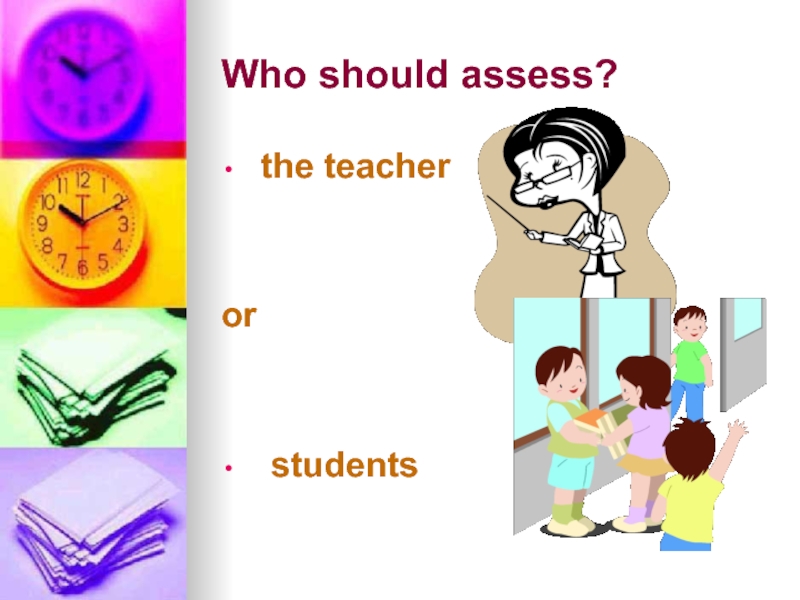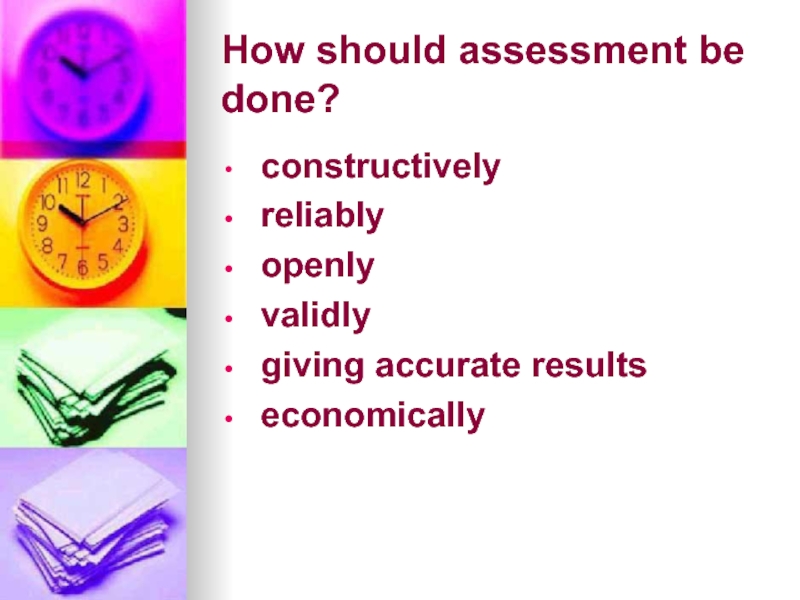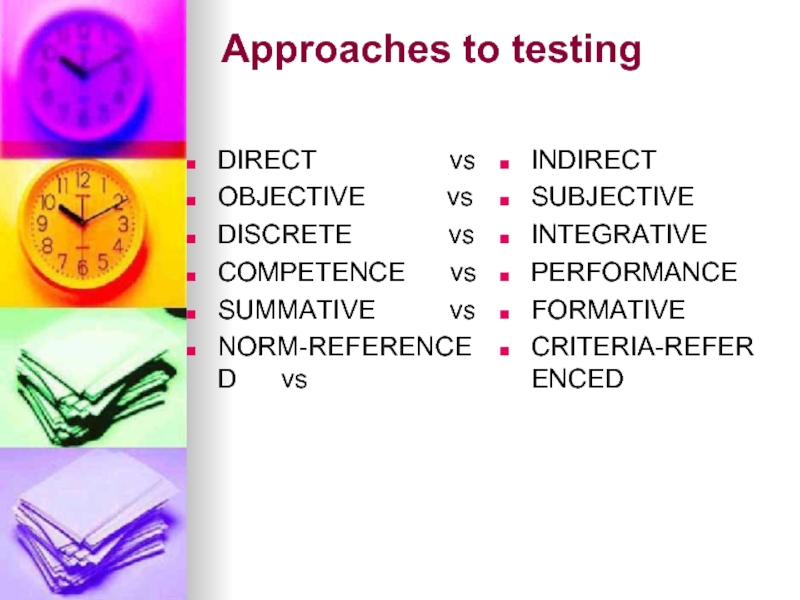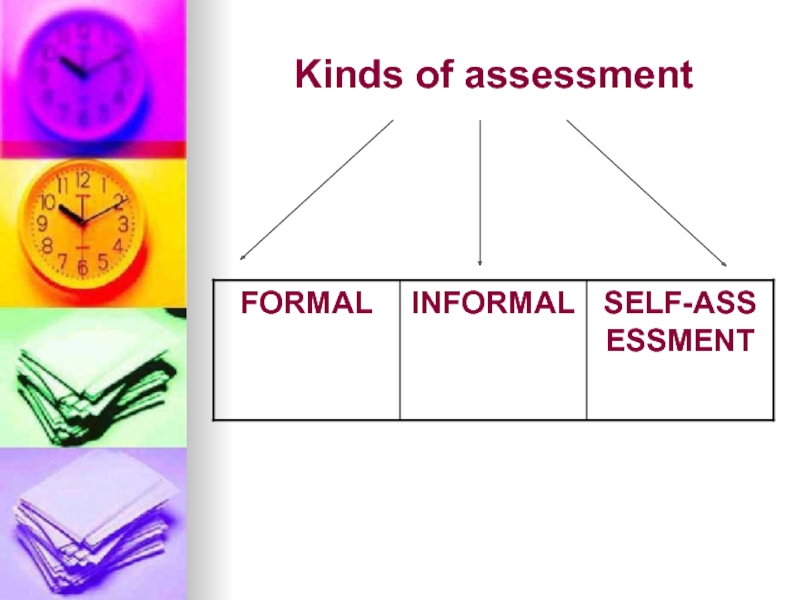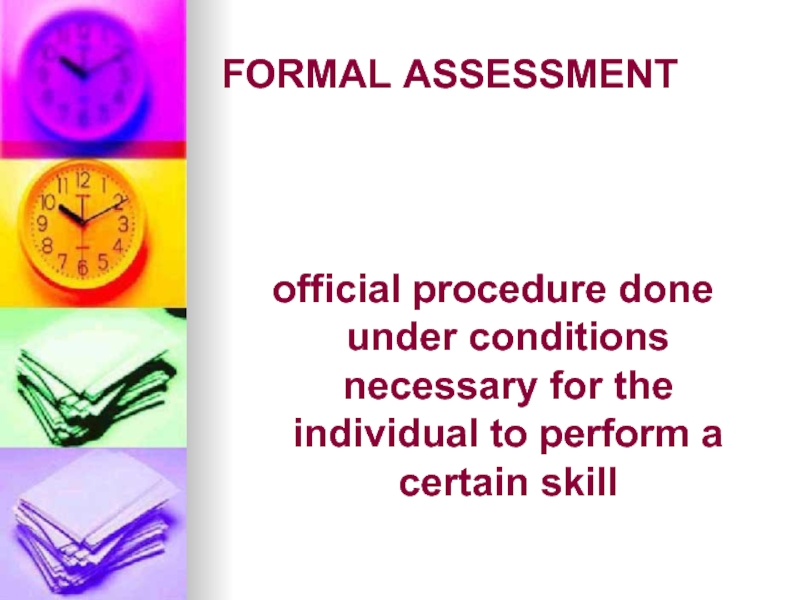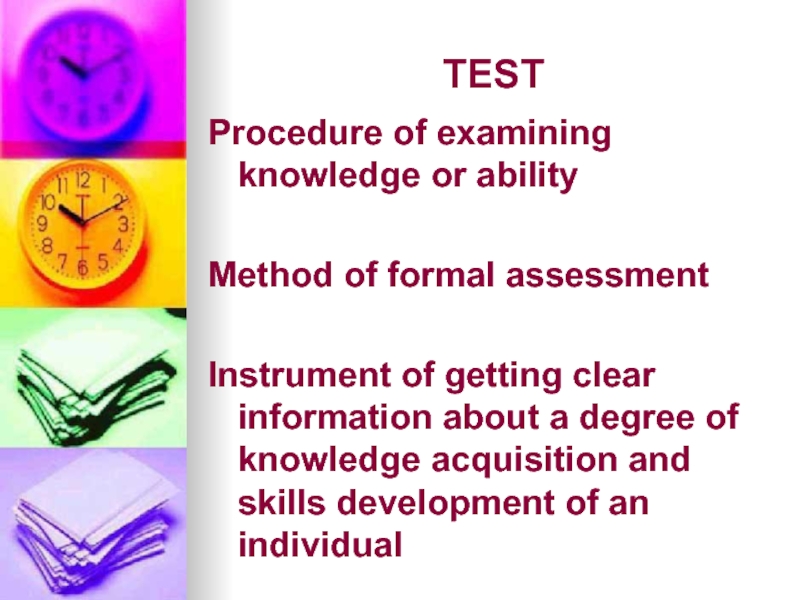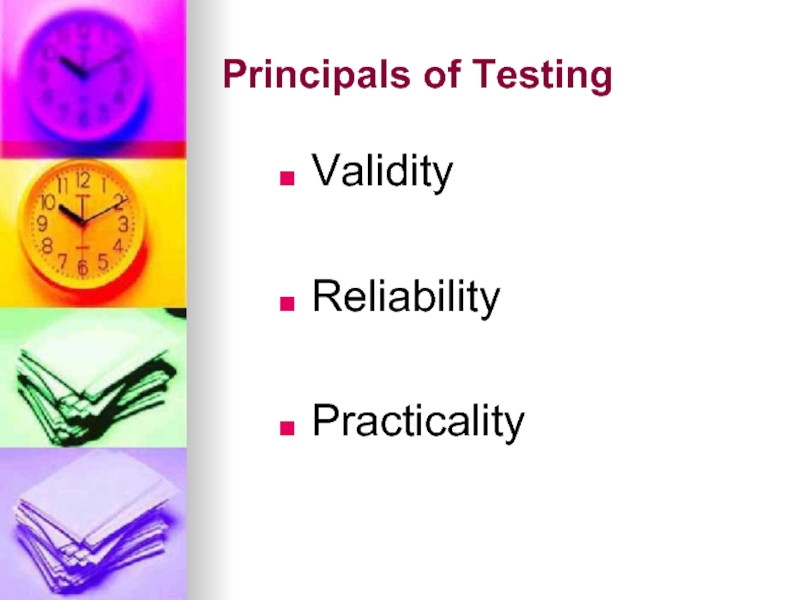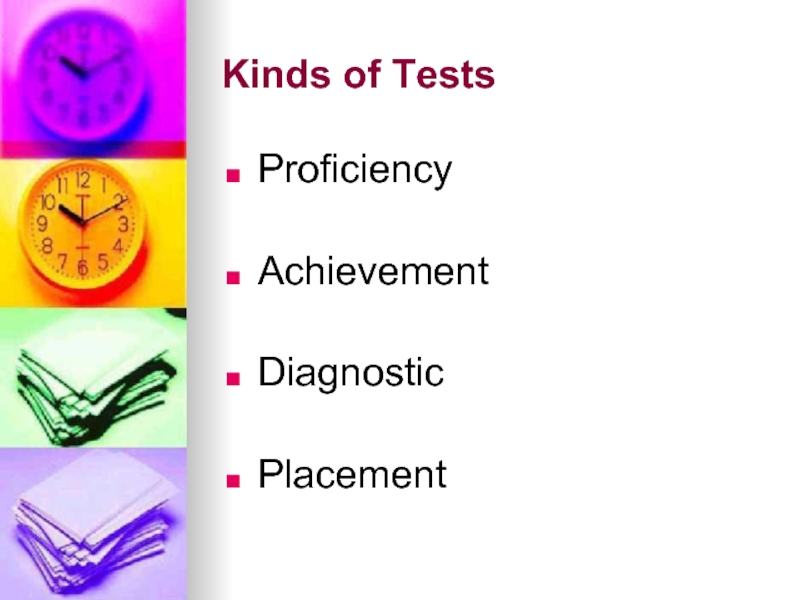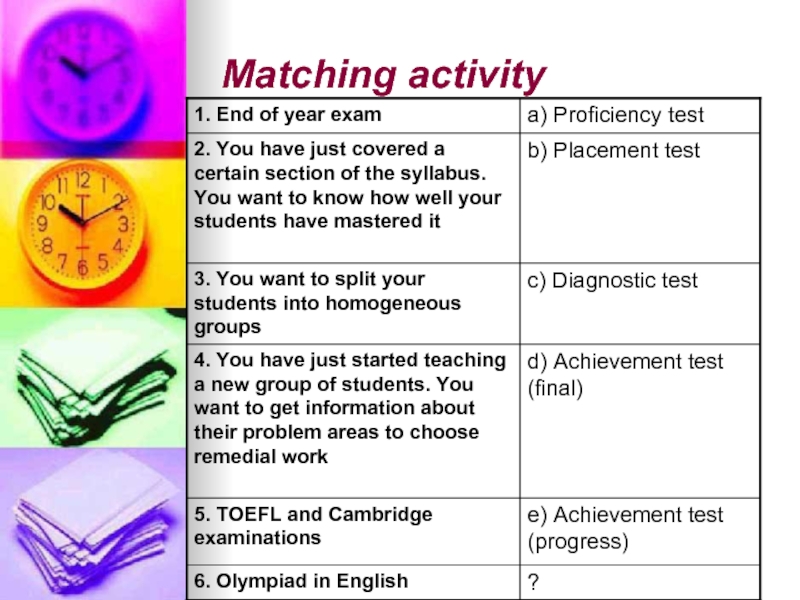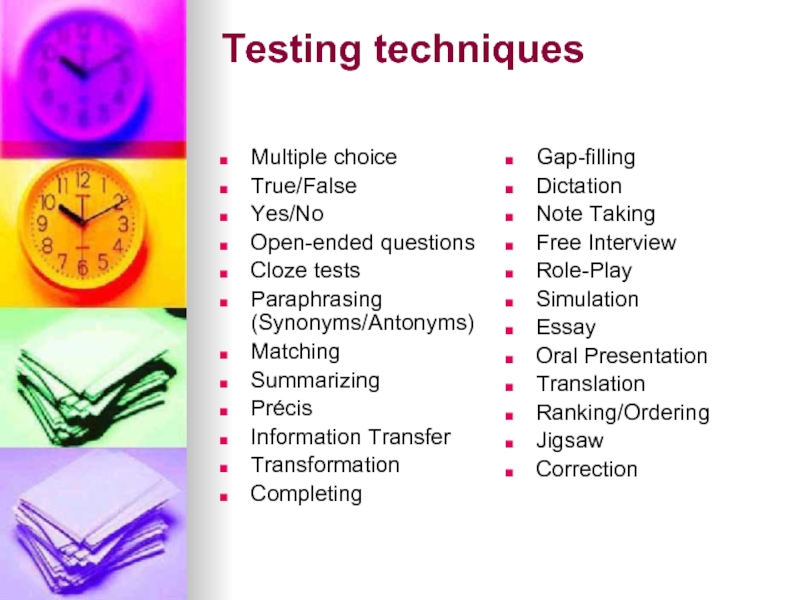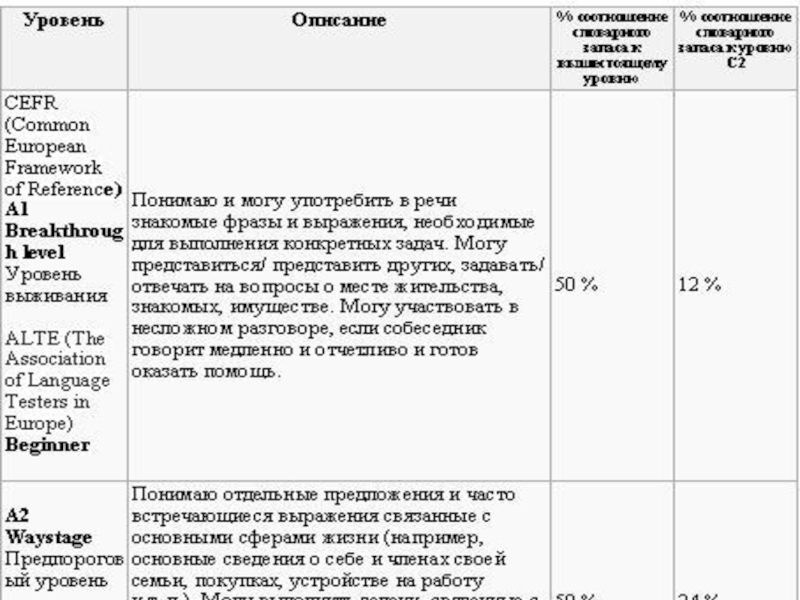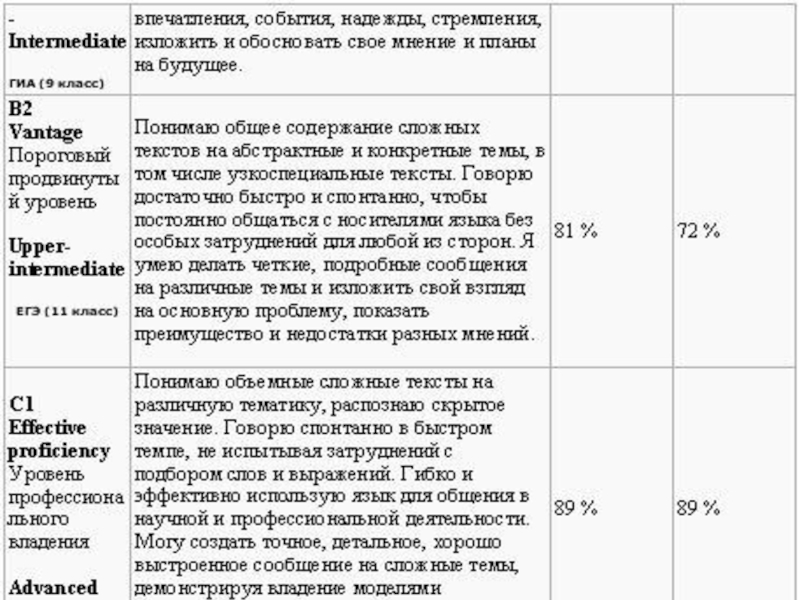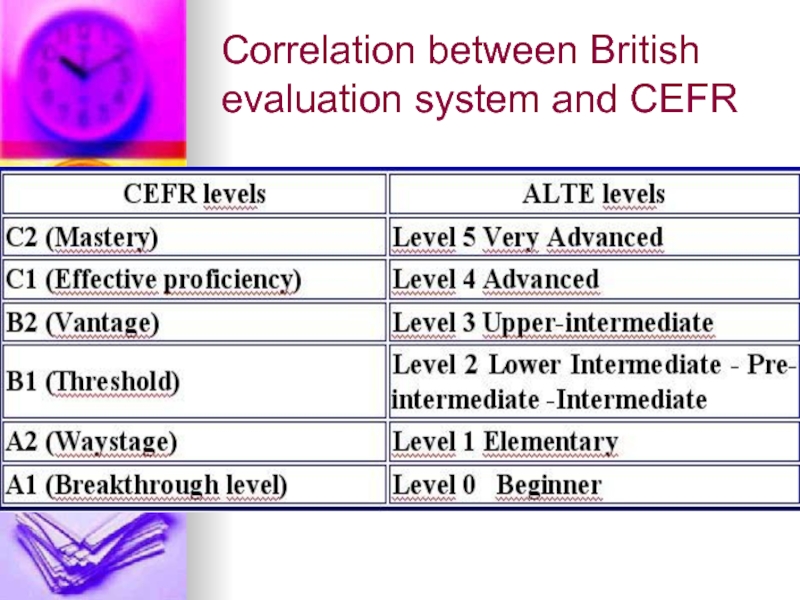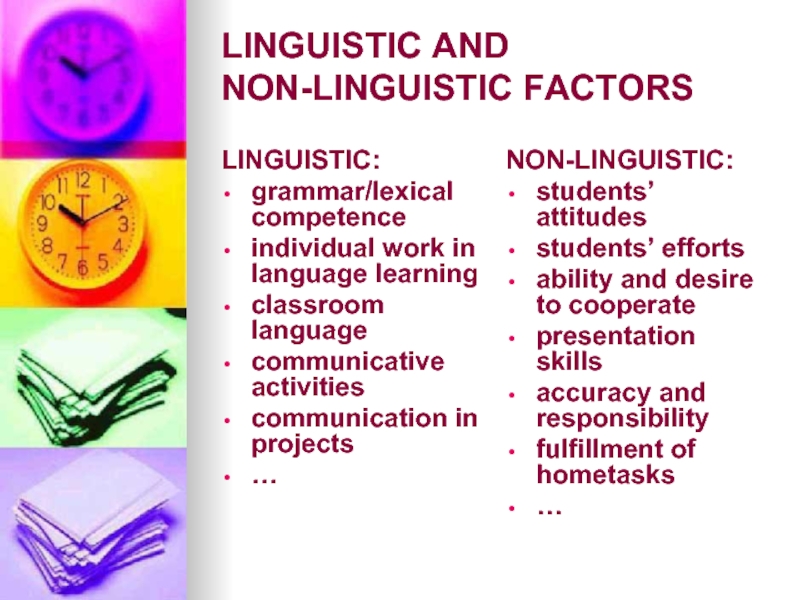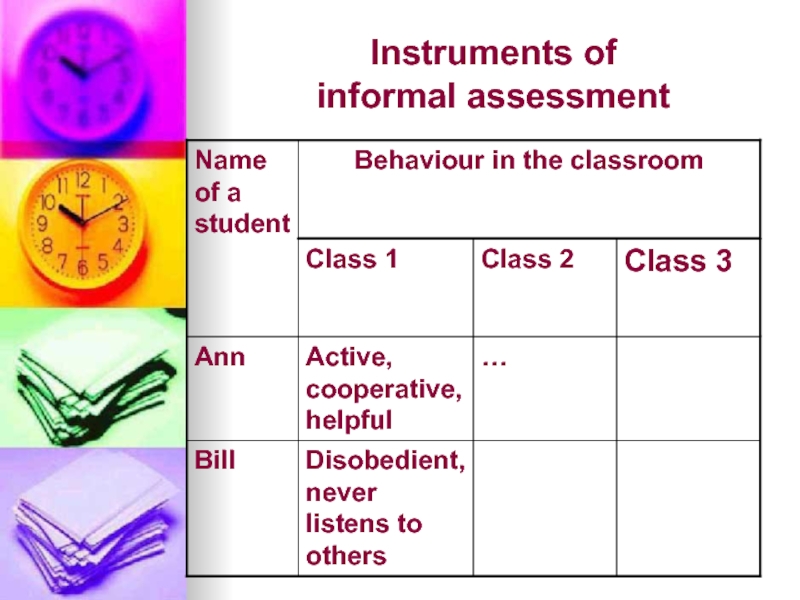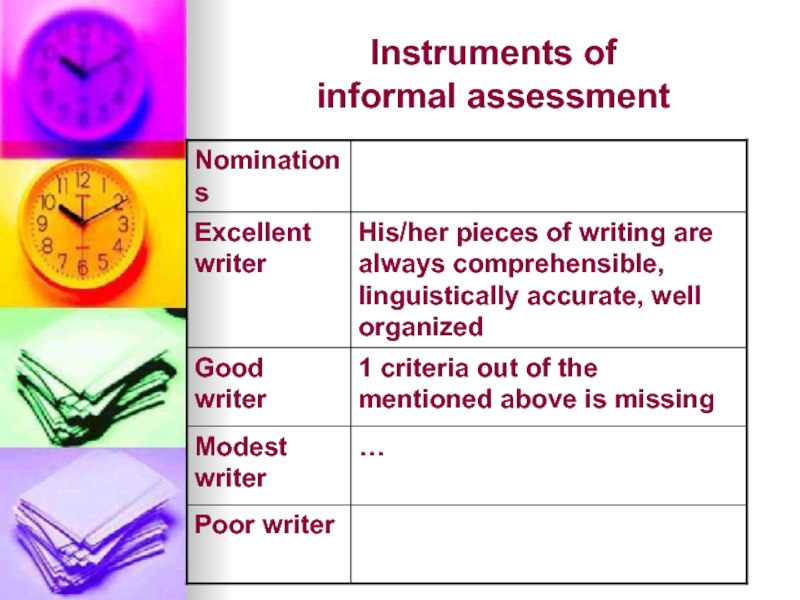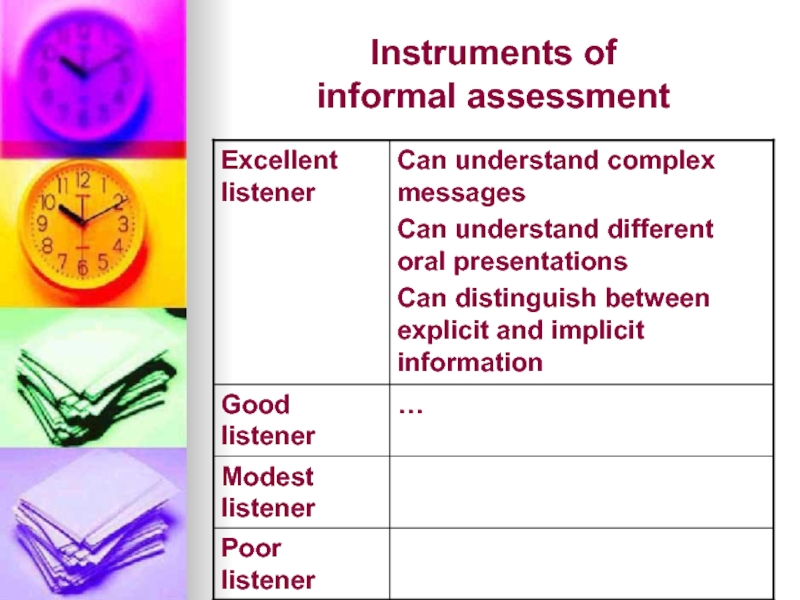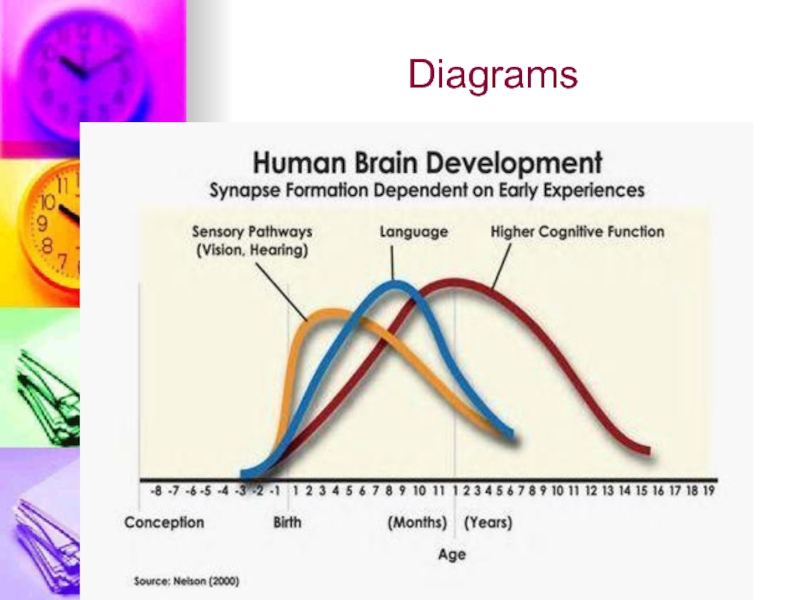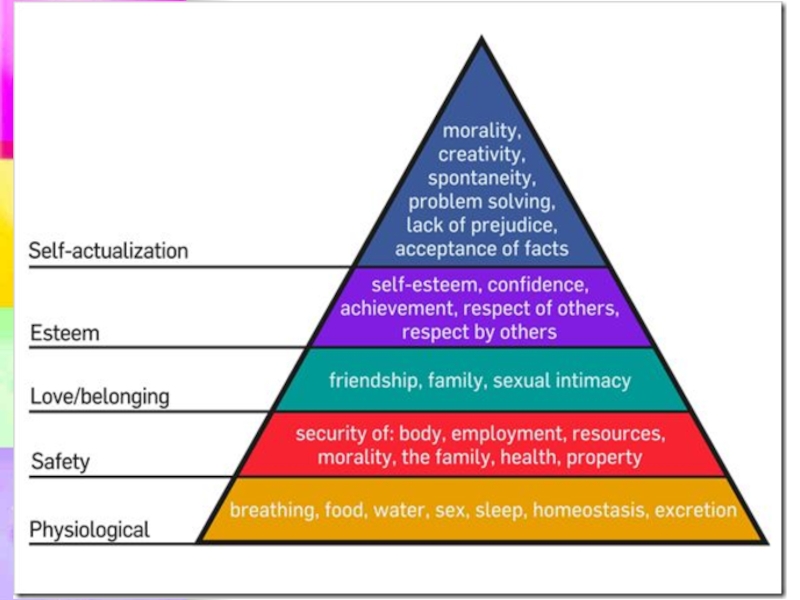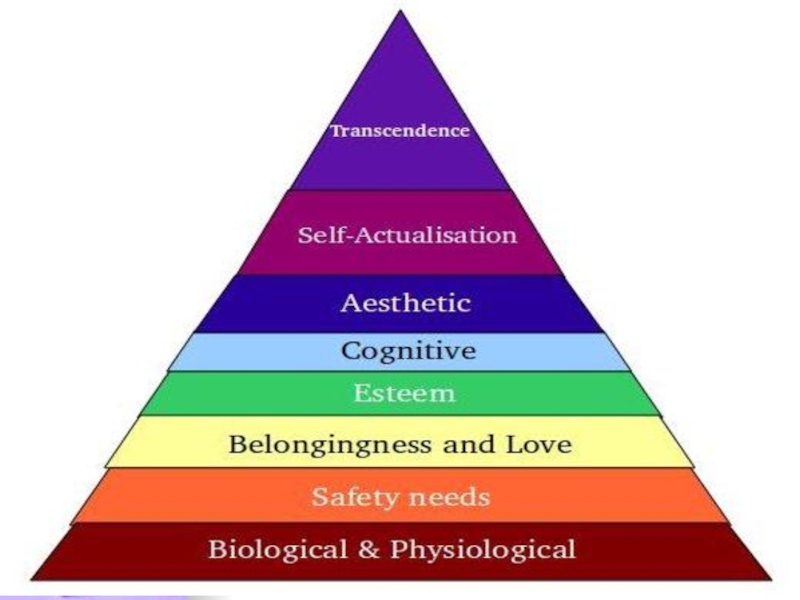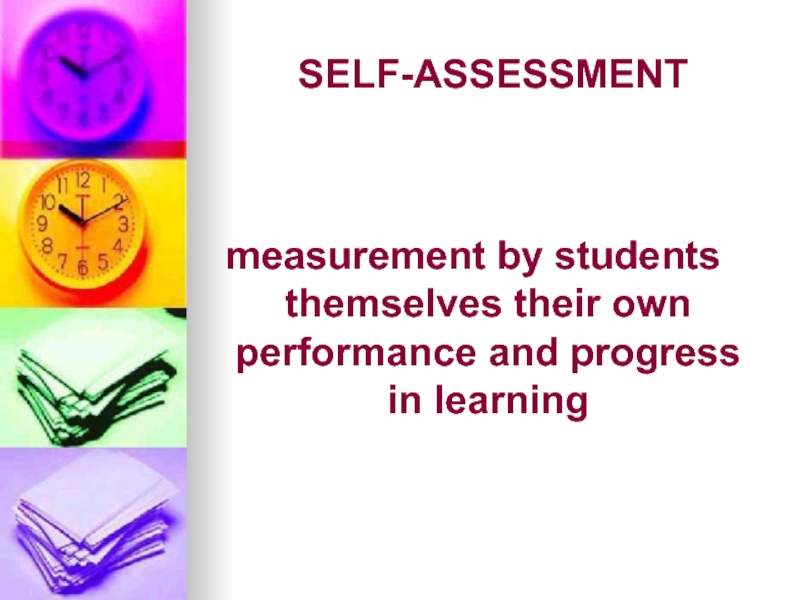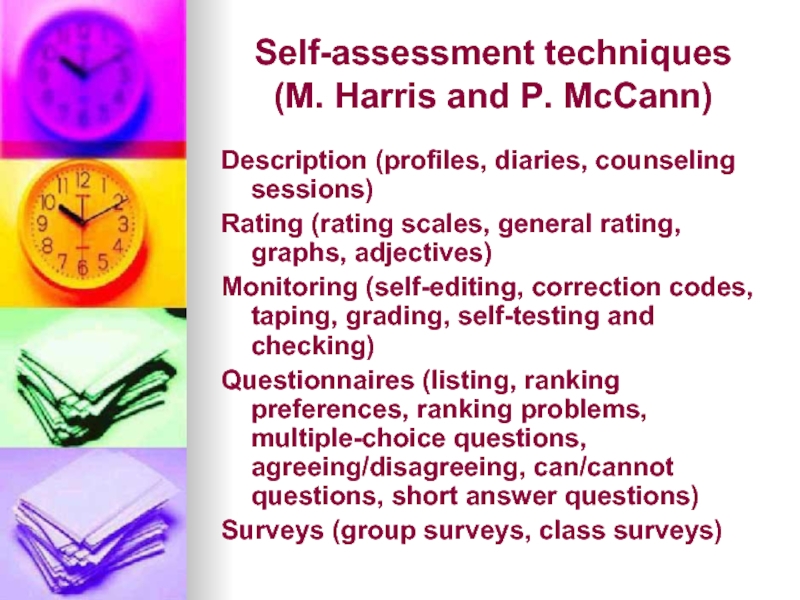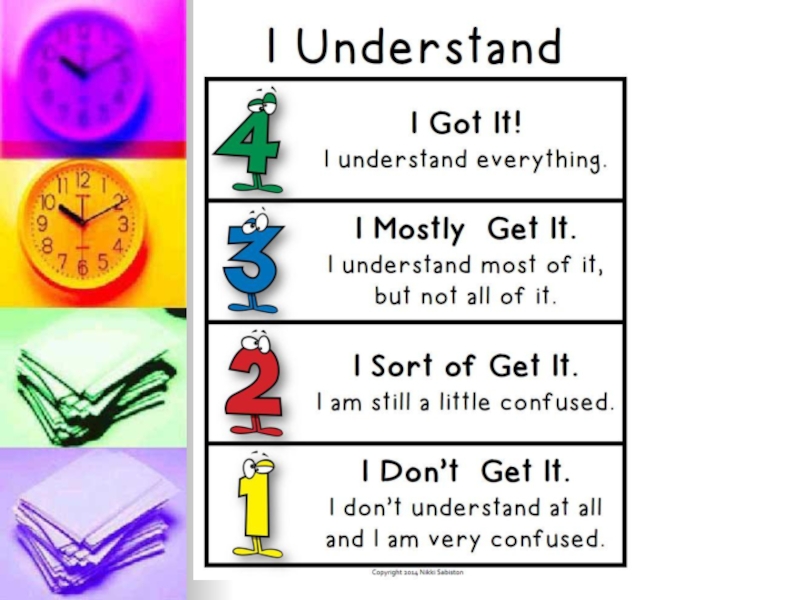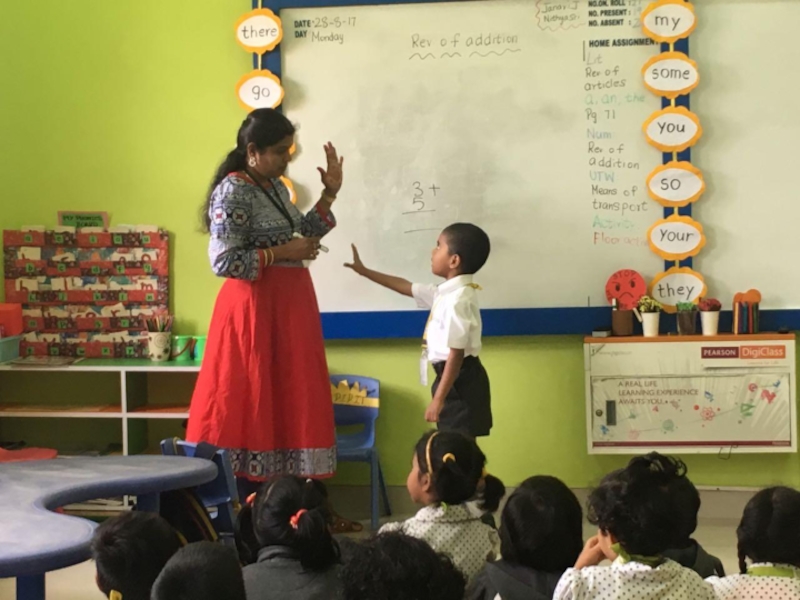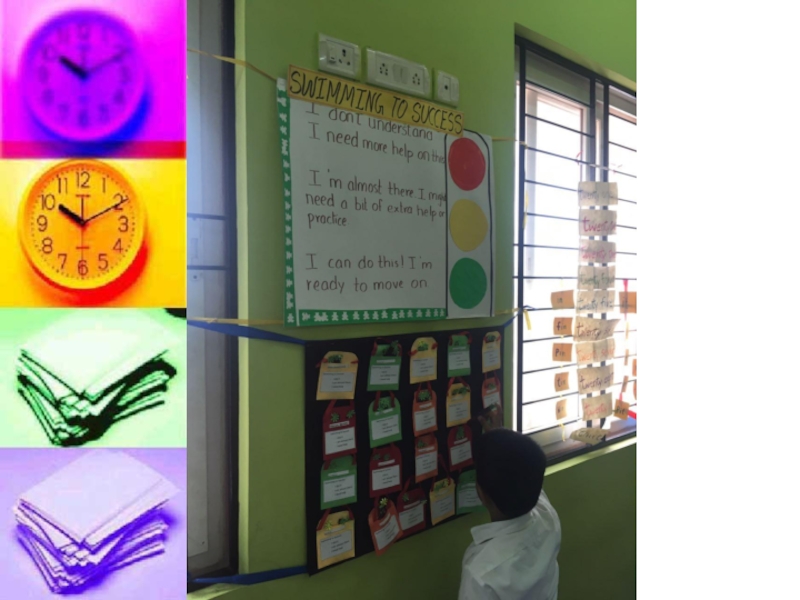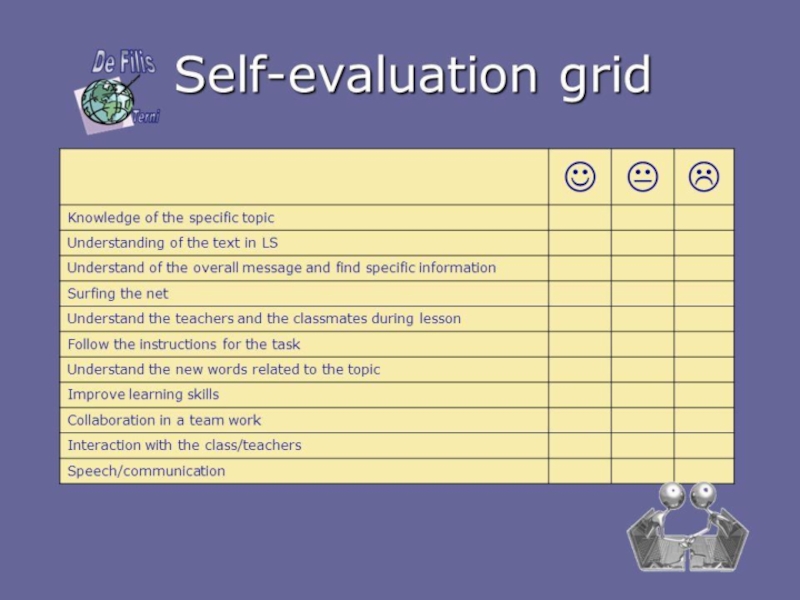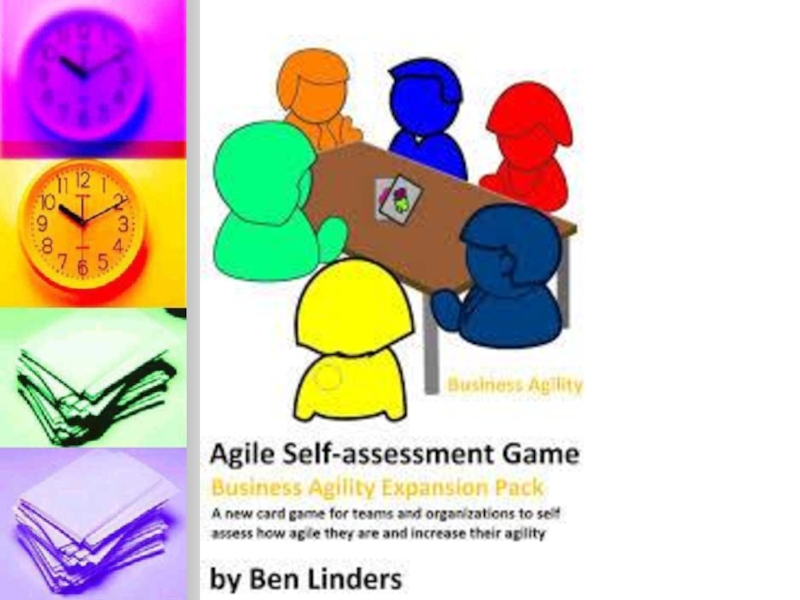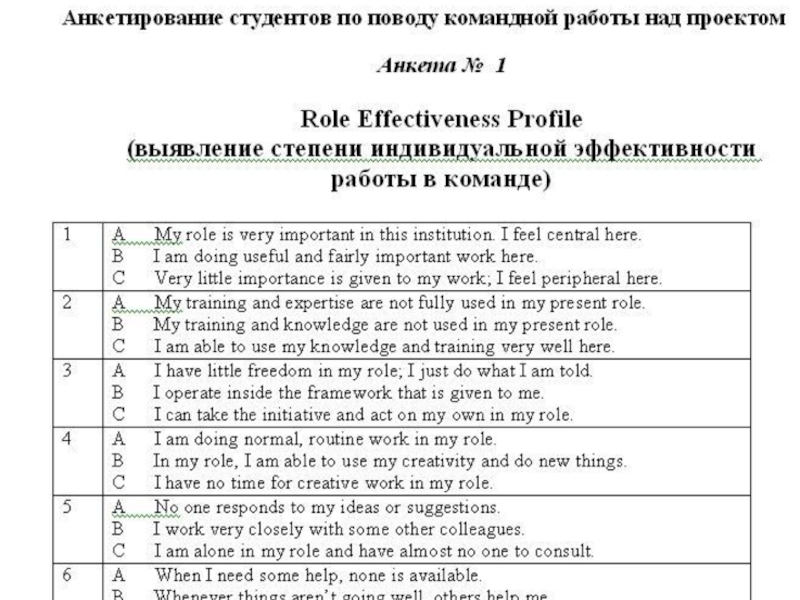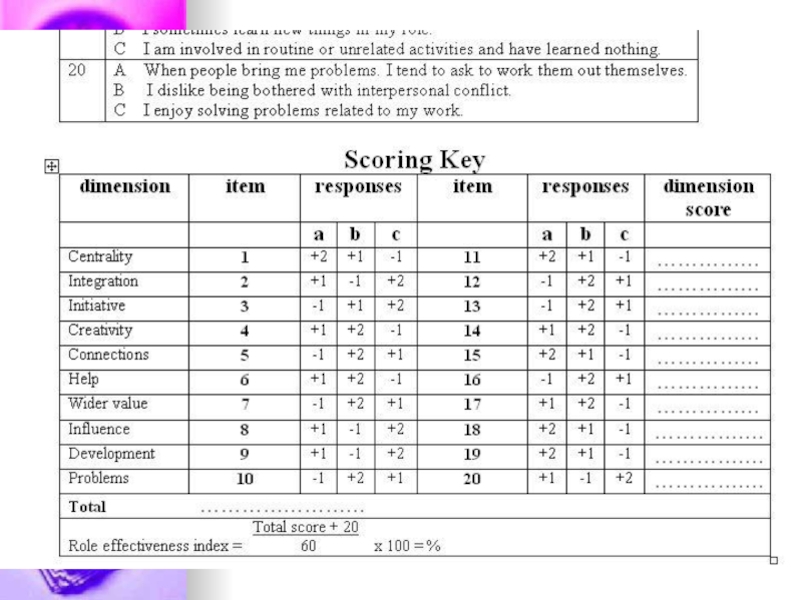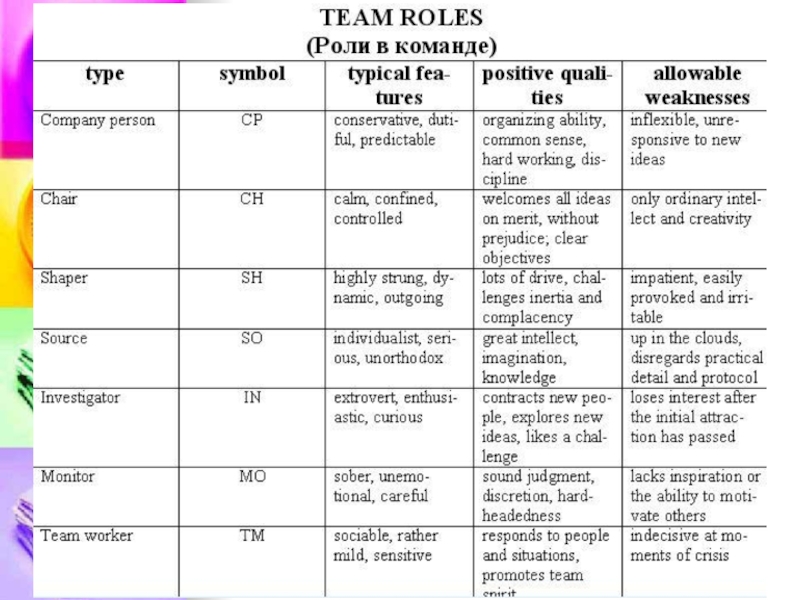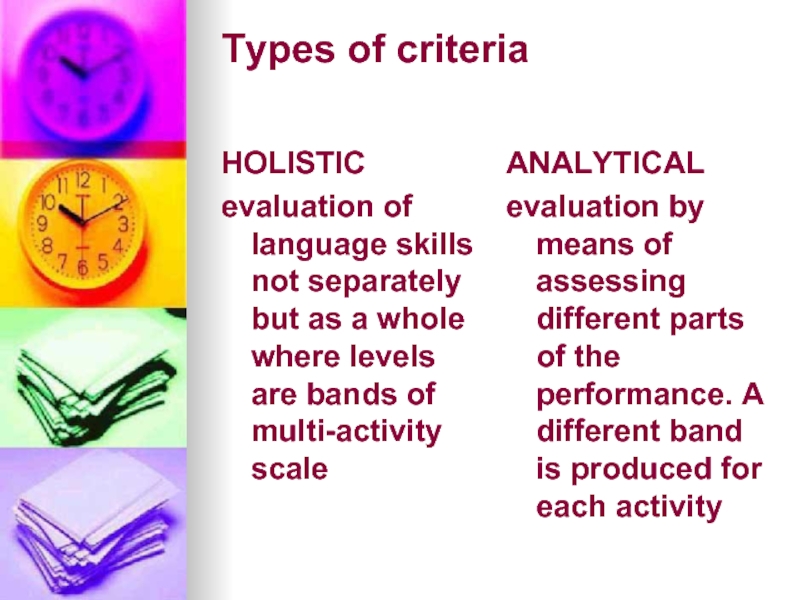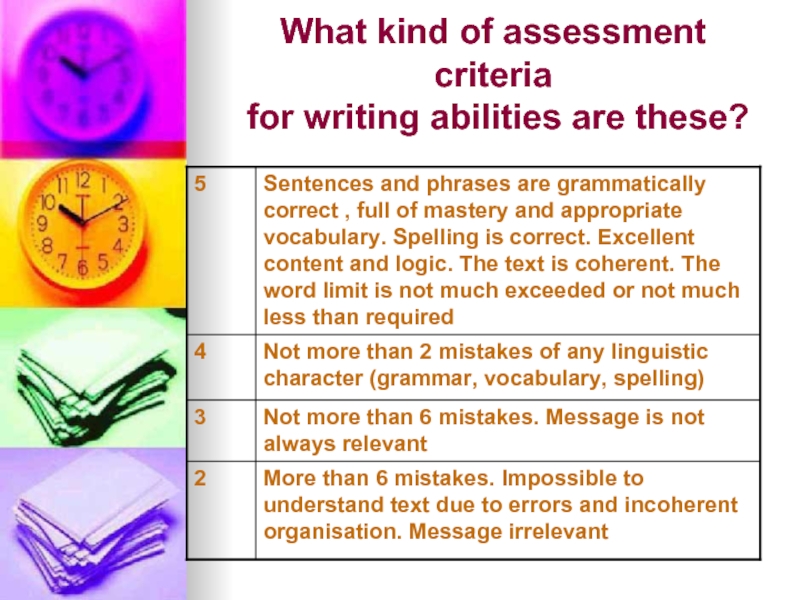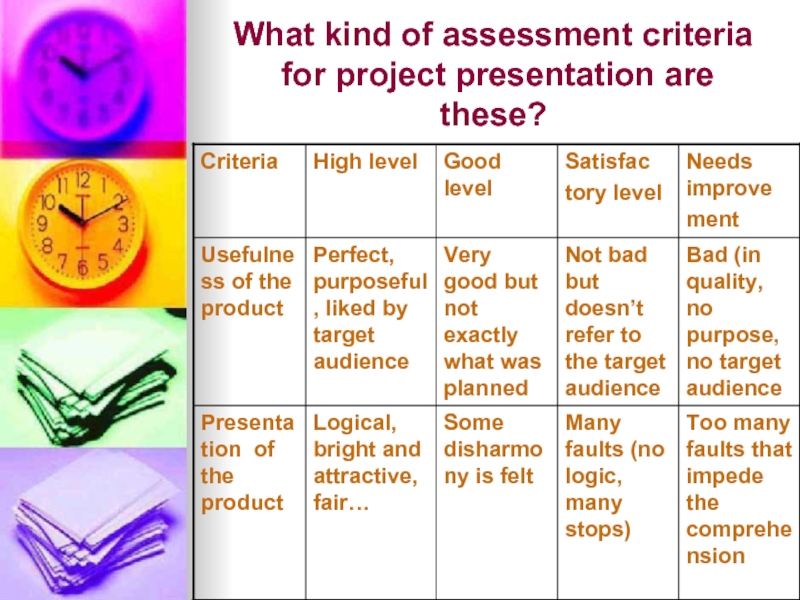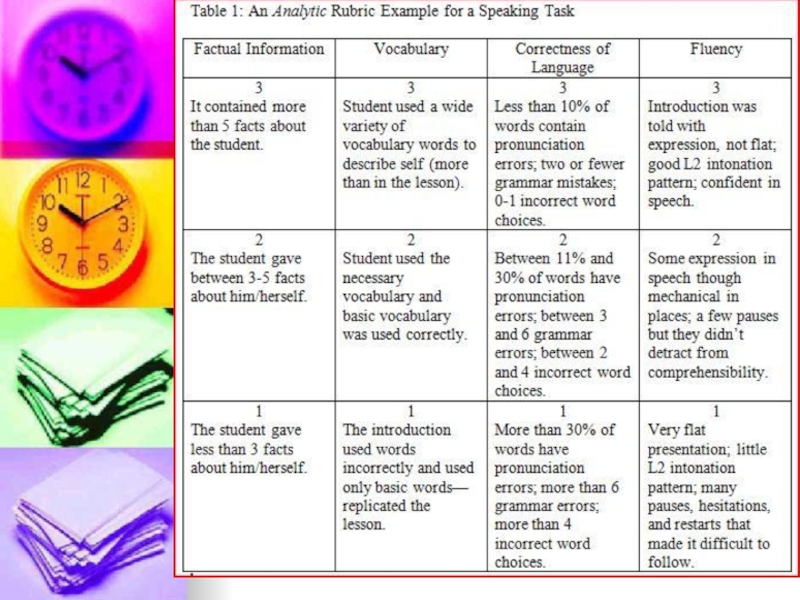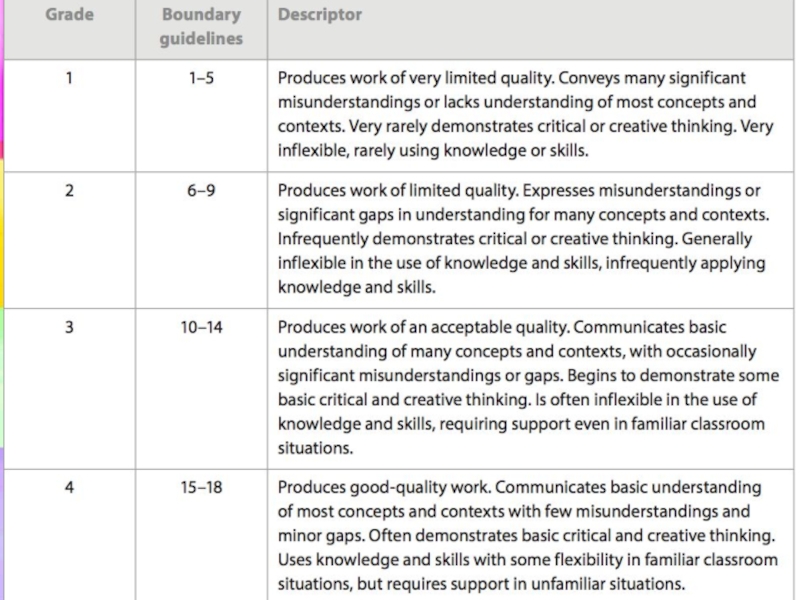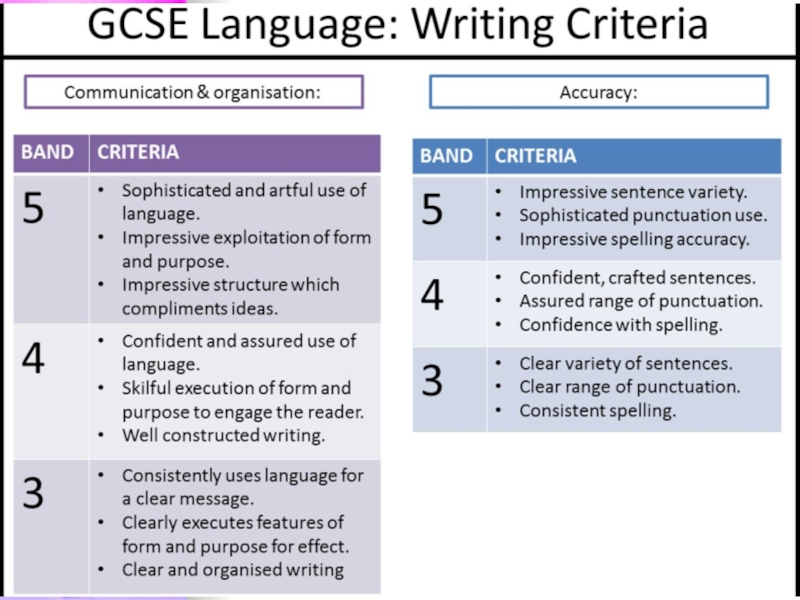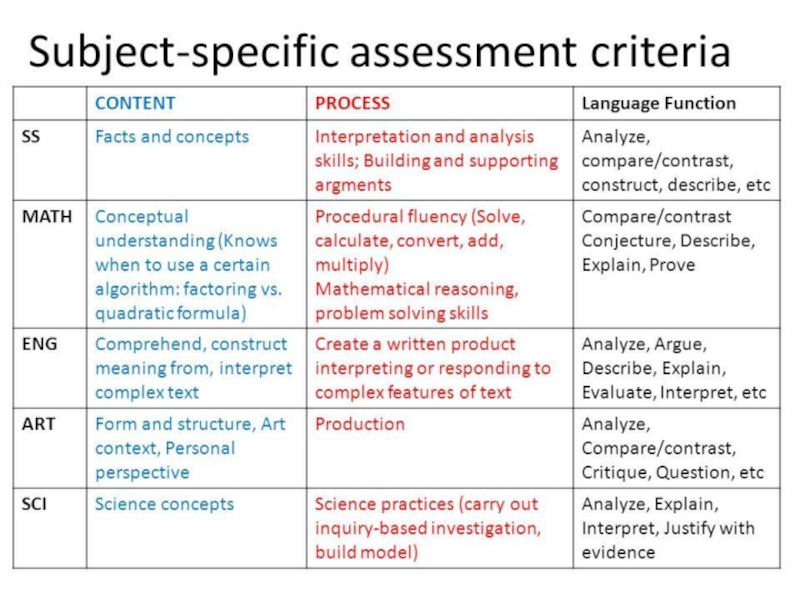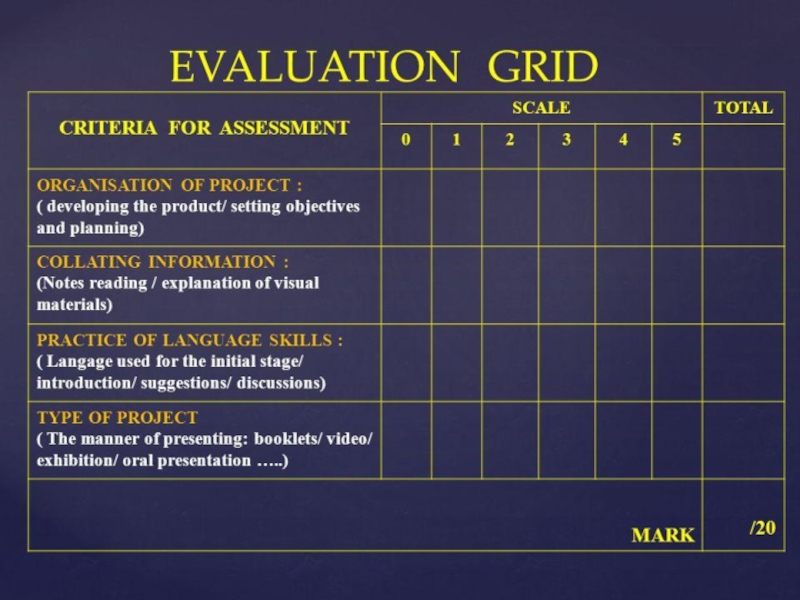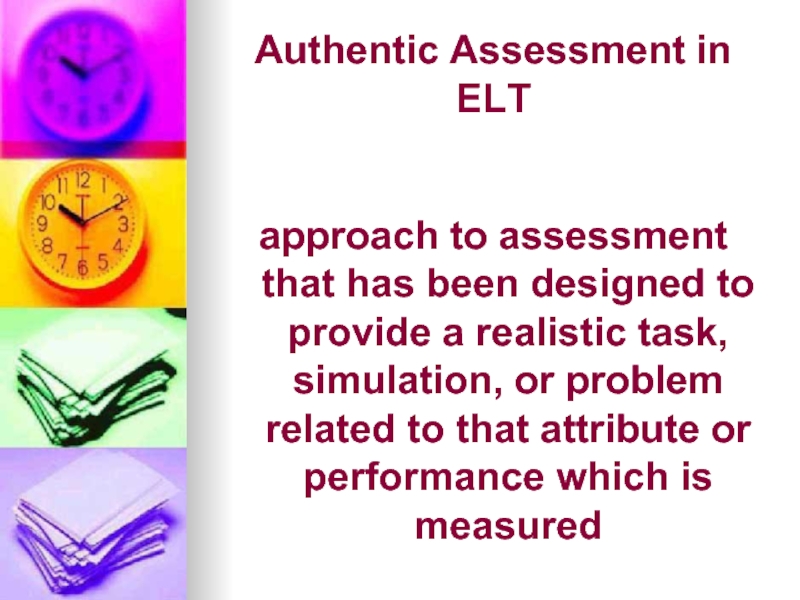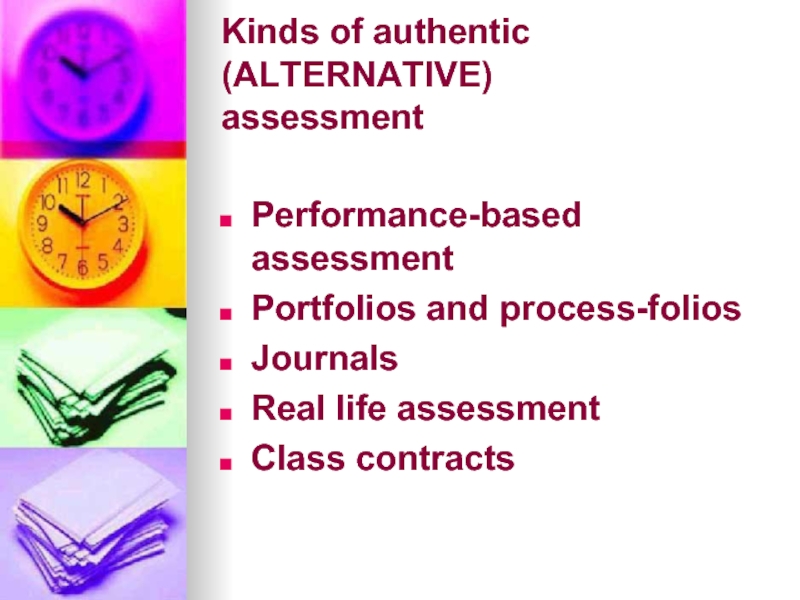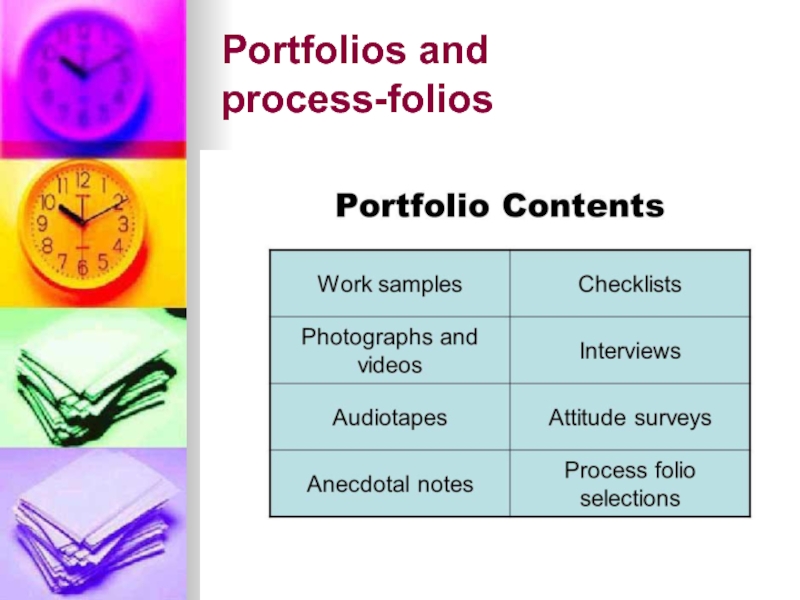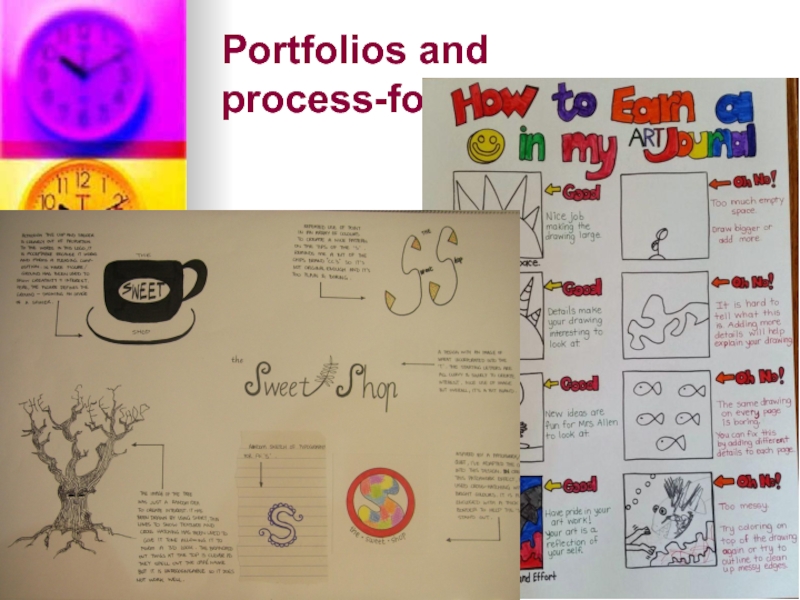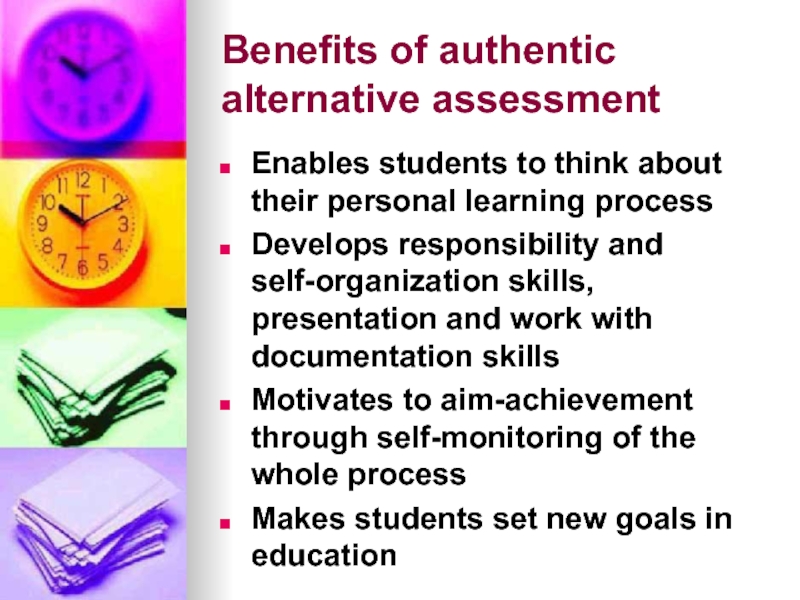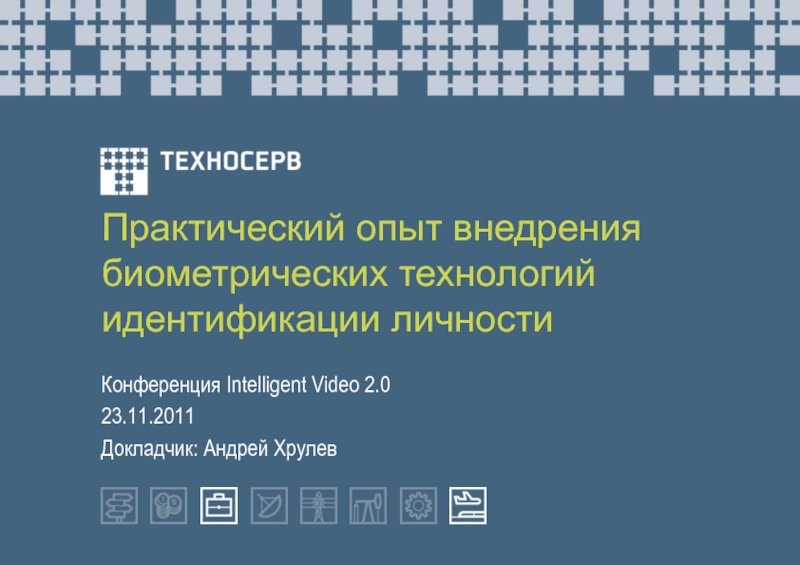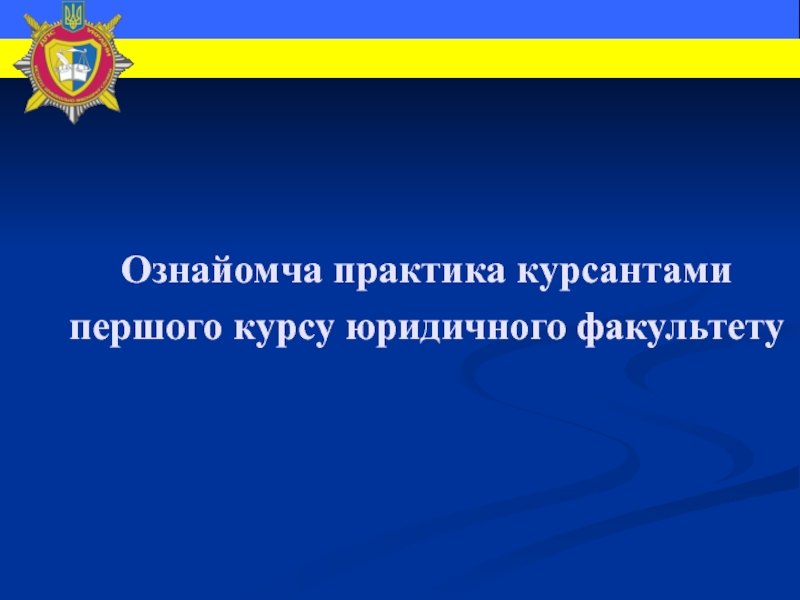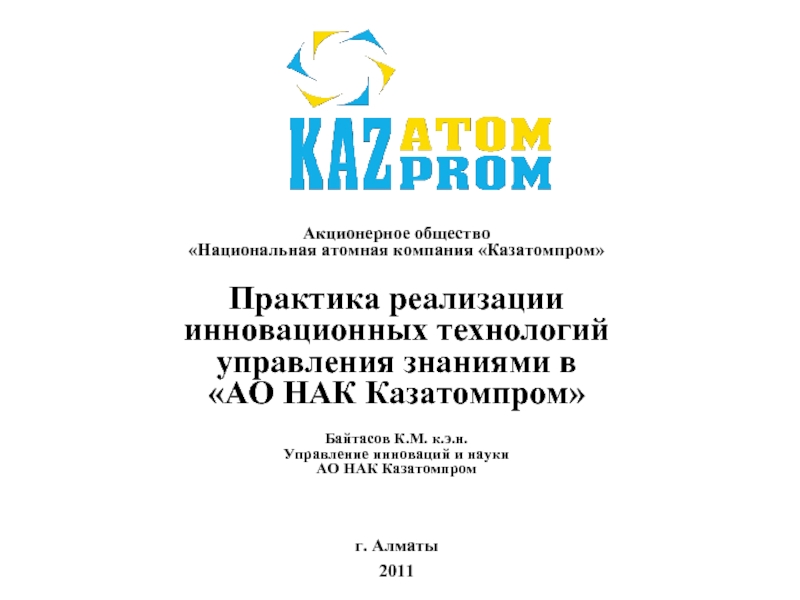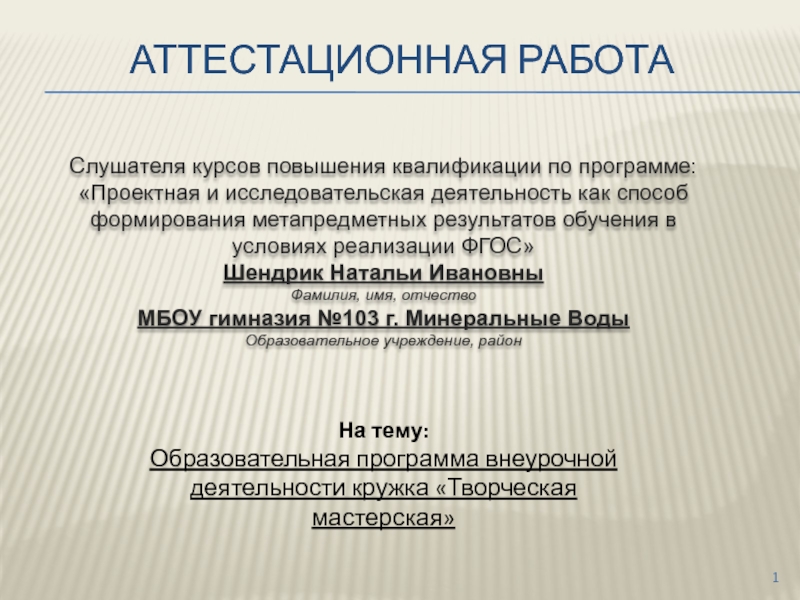- Главная
- Разное
- Дизайн
- Бизнес и предпринимательство
- Аналитика
- Образование
- Развлечения
- Красота и здоровье
- Финансы
- Государство
- Путешествия
- Спорт
- Недвижимость
- Армия
- Графика
- Культурология
- Еда и кулинария
- Лингвистика
- Английский язык
- Астрономия
- Алгебра
- Биология
- География
- Детские презентации
- Информатика
- История
- Литература
- Маркетинг
- Математика
- Медицина
- Менеджмент
- Музыка
- МХК
- Немецкий язык
- ОБЖ
- Обществознание
- Окружающий мир
- Педагогика
- Русский язык
- Технология
- Физика
- Философия
- Химия
- Шаблоны, картинки для презентаций
- Экология
- Экономика
- Юриспруденция
Modern systems of assessment in ELT презентация
Содержание
- 1. Modern systems of assessment in ELT
- 2. PLAN of the lecture Definitions of the
- 3. ASSESSMENT (definitions) Give your definition! a
- 4. PROBLEMS OF ASSESSMENT When should
- 5. Who should assess? the teacher or students
- 6. How should assessment be done? constructively
- 7. Approaches to testing DIRECT
- 8. Kinds of assessment
- 9. FORMAL ASSESSMENT official procedure done under conditions
- 10. TEST Procedure of examining knowledge or ability
- 11. Principals of Testing Validity Reliability Practicality
- 12. Kinds of Tests Proficiency Achievement Diagnostic Placement
- 13. Matching activity
- 14. Testing techniques Multiple choice True/False Yes/No
- 17. Correlation between British evaluation system and CEFR
- 18. INFORMAL ASSESSMENT system of observation and collection
- 19. LINGUISTIC AND NON-LINGUISTIC FACTORS LINGUISTIC: grammar/lexical competence
- 20. Instruments of informal assessment
- 21. Instruments of informal assessment
- 22. Instruments of informal assessment
- 23. Visuals
- 24. Diagrams
- 28. SELF-ASSESSMENT measurement by students themselves their own performance and progress in learning
- 29. Self-assessment techniques (M. Harris and P.
- 42. Criteria of assessment descriptions of what students should be able to do with the language
- 43. Types of criteria HOLISTIC evaluation of language
- 44. What kind of assessment criteria for writing abilities are these?
- 45. What kind of assessment criteria for project presentation are these?
- 51. Authentic Assessment in ELT approach to assessment
- 52. Kinds of authentic (ALTERNATIVE) assessment
- 53. Performance-based assessment Open-ended Complex Authentic Require
- 54. Portfolios and process-folios
- 55. Portfolios and process-folios
- 56. Benefits of authentic alternative assessment Enables students
- 57. Thanks for your attention!!!
Слайд 2PLAN of the lecture
Definitions of the main terms
Problems of assessment
Approaches to
Forms of assessment
Types of criteria
Authentic assessment
Слайд 3ASSESSMENT (definitions)
Give your definition!
a process in which you make a
calculation of the cost or value of something
measurement of personal abilities or process/ product quality and success
Слайд 4
PROBLEMS OF ASSESSMENT
When should assessment take place?
It should be a continuous
Слайд 6How should assessment be done?
constructively
reliably
openly
validly
giving accurate
economically
Слайд 7Approaches to testing
DIRECT
OBJECTIVE vs
DISCRETE vs
COMPETENCE vs
SUMMATIVE vs
NORM-REFERENCED vs
INDIRECT
SUBJECTIVE
INTEGRATIVE
PERFORMANCE
FORMATIVE
CRITERIA-REFERENCED
Слайд 9FORMAL ASSESSMENT
official procedure done under conditions necessary for the individual to
Слайд 10TEST
Procedure of examining knowledge or ability
Method of formal assessment
Instrument of getting
Слайд 14Testing techniques
Multiple choice
True/False
Yes/No
Open-ended questions
Cloze tests
Paraphrasing (Synonyms/Antonyms)
Matching
Summarizing
Précis
Information Transfer
Transformation
Completing
Gap-filling
Dictation
Note Taking
Free Interview
Role-Play
Simulation
Essay
Oral
Translation
Ranking/Ordering
Jigsaw
Correction
Слайд 18INFORMAL ASSESSMENT
system of observation and collection of data about students’ performance
Слайд 19LINGUISTIC AND NON-LINGUISTIC FACTORS
LINGUISTIC:
grammar/lexical competence
individual work in language learning
classroom language
communicative activities
communication
…
NON-LINGUISTIC:
students’ attitudes
students’ efforts
ability and desire to cooperate
presentation skills
accuracy and responsibility
fulfillment of hometasks
…
Слайд 28SELF-ASSESSMENT
measurement by students themselves their own performance and progress in learning
Слайд 29Self-assessment techniques
(M. Harris and P. McCann)
Description (profiles, diaries, counseling sessions)
Rating
Monitoring (self-editing, correction codes, taping, grading, self-testing and checking)
Questionnaires (listing, ranking preferences, ranking problems, multiple-choice questions, agreeing/disagreeing, can/cannot questions, short answer questions)
Surveys (group surveys, class surveys)
Слайд 43Types of criteria
HOLISTIC
evaluation of language skills not separately but as a
ANALYTICAL
evaluation by means of assessing different parts of the performance. A different band is produced for each activity
Слайд 51Authentic Assessment in ELT
approach to assessment that has been designed to
Слайд 52Kinds of authentic (ALTERNATIVE)
assessment
Performance-based assessment
Portfolios and process-folios
Journals
Real life assessment
Class contracts
Слайд 53Performance-based assessment
Open-ended
Complex
Authentic
Require the presentation of worthwhile tasks in the academic field
Make
Emphasize high level of thinking
Слайд 56Benefits of authentic alternative assessment
Enables students to think about their personal
Develops responsibility and self-organization skills, presentation and work with documentation skills
Motivates to aim-achievement through self-monitoring of the whole process
Makes students set new goals in education

